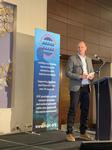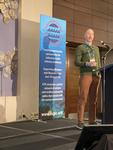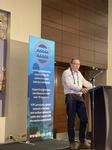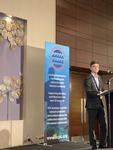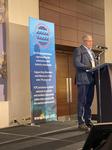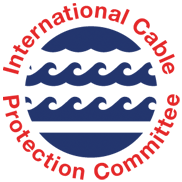
15th April 2025: Plenary Day 1
Graham Evans (ICPC Chair) and Ryan Wopschall (ICPC General Manager) opened the 2025 Plenary in Montréal, Canada under this year’s theme: ‘The Big Squeeze: Geopolitics & Spatial Planning,’ with the goal to consider the challenges and opportunities shaping the future of undersea cables.
The ICPC, an organisation that has grown from 218 Members in 2024 to 245 Members (12% increase) across 76 countries in 2025, is on a mission to be the ‘world’s leading organisation promoting submarine cable protection and resilience’ with an associated vision of a ‘global network of reliable and resilient submarine cables that coexist with the marine environment.’ To foster this mission and vision, the 2025 Plenary included a variety of relevant topics, discussions, and presentations that together align to the ICPC slogan of ‘sharing the seabed and oceans in harmony.’
Graham Evans covered a multitude of ICPC sponsored projects with organisations such as the United Nations Environmental Program World Conservation Monitoring Center (UNEP-WCMC), International Seabed Authority (ISA), International Hydrographic Organization (IHO), Indonesia Services Dialogue Council Focus Group, Telkom University in Indonesia, Submarine Networks EMEA event committee, and SubOptic.
Ryan Wopschall discussed ICPC website updates such as the latest news, spotlight news, media inquiries, viewpoints, environment and legal library updates, and an update on ICPC Working Groups.
John Wrottesley, ICPC Operations Manager, covered several projects such as the ‘Valentia Island Cable Resilience Symposium’ and ‘Advanced Research Workshop on Undersea Communications Cables & Crisis Management Workshop,’ as well as the multitude of ICPC projects related to research funding, white papers, and studies—a very busy year! Of particular interest was an update on the UNEP-WCMC the ‘Submarine Cables and Marine Biodiversity’ report to be launched later this month with an associated webinar.
Tuesday morning focused on ICPC Working Group updates on several interrelated topics including sensing technology, geopolitics, cable physical threats, recovery and recycling, ecological impacts, research projects, ICPC best practices, and evolving climate change. Of note, Dean Veverka (ICPC Vice Chairman) provided a comprehensive update on how the ICPC communicates with the outside world.
If you’d like to learn more about each individual working group, please contact the presenters listed below.
- Business Plan—Bens Sims
- Cable Materials—Simon Appleby
- Charting—Graham Evans
- Fish Aggregation Device Working Group (FAD)—Mick McGovern
- Legal/BBNJ/Mining—Kent Bressie
- Marine Environment—Dr. Mike Clare
- Media & Public Relations—Dean Veverka
- Recommendations Steering Group—John Wrottesley
- Sensing—Simon Webster
- ‘The transatlantic cable—the wire that changed the world’ by Invited Guest Speaker Gerry Osmond (Board Member from the Valentia Transatlantic Cable Foundation)
- ‘Submarine cables—untapped passive detection systems under the sea’ by Raj Jayawardena (Fiber Sense Pty Limited)
- ‘Is the North Sea running out of room? Compromise on room to lay’ by Dr Lorraine Gray (Pioneer Consulting)
- ‘Offshore wind vs. subsea cables. Should this be a choice, or can both coexist?’ by David Walker (Alcatel Submarine Networks Ltd)
- ‘Bridging connectivity and regulation in Africa: navigating submarine cable development amid evolving legal landscapes’ by Douglas Njenga (WIOCC)
The ICPC would also like to thank the Networking Sponsor, IT International Telecom Canada Inc. and the following exhibitors: Global Spatial Technology Solutions Inc. (GSTS), Starboard Maritime Intelligence, Subsea Environmental Services BV, UltraMAP Limited and Quintham.
Cheers to a successful Day 1 of the Plenary!
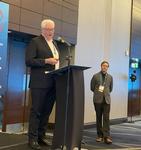
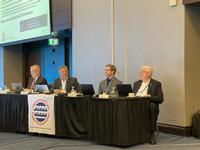
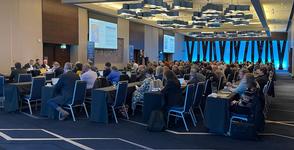
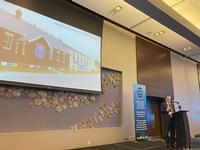
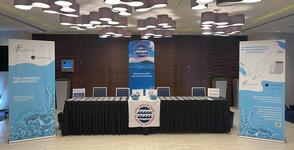
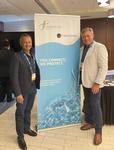
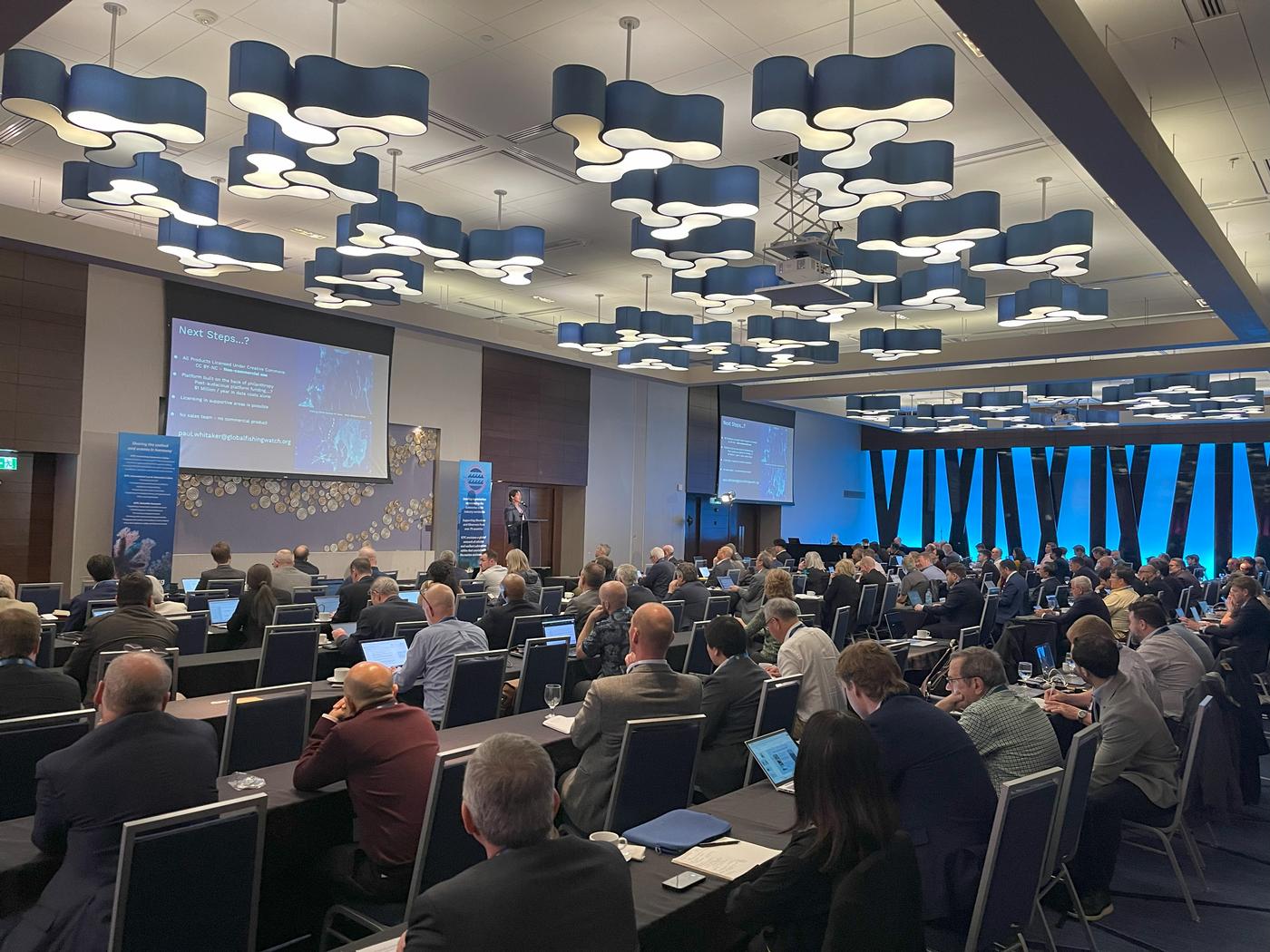
16th April 2025: Plenary Day 2
Day 2 of the ICPC Plenary had another full day of engaging and insightful presentations in store for event attendees!
- ‘Continuities and Discontinuities: Geopolitics and Submarine Telecommunications Cables’ by Dr Camino Kavanagh (King's College London) & Dr Jonathan Winkler (Wright State University)
This presentation examined the interplay between geopolitics, submarine cable routing and wider cable protection measures through the lens of history, highlighting how great power dynamics, resource competition and shifting international relations have created pressures for both industry and government planners as they strive to ensure resilience in situations of global uncertainty requiring flexibility and adaptability. Both speakers underscored key continuities such as enduring national security concerns and economic and trade imperatives, and the discontinuities that may be borne out of technological developments, climate change or even live conflict. Issues such as redundancy, charting submarine cables for awareness, sabotage and espionage at sea, repair in situations of ambiguity and in conflict as well as cable diplomacy were discussed.
Camino and Jonathan also shed light on the importance of public-private collaboration for national preparedness in the current context of accelerating geopolitical tensions.
- ‘NATO and Critical Undersea Infrastructure in an Age of Great Power Competition: What to Expect?’ by Dr Brook Smith-Windsor (Former RAND Corporation / Europe).
This presentation addressed the issues of why, where, and how NATO has an interest in Critical Undersea Infrastructure (CUI).
Why? 32 NATO Member States at the Vilius Summit in 2023 concluded that CUI is a strategic concern, and that nation states have primary responsibility for CUI protection, as well as a collective commitment (collective action dependent on consensus).
The question of where focused on a discussion of regions where NATO may be expected to be present (for example the Mediterranean and North Atlantic, but arguably less so in the North Pacific).
Finally, the how – Brook highlighted the three core roles of NATO, namely: (1) deterrence and defence; (2) cooperative security, and (3) crisis prevention and management.
- ‘Surveying & Cable Installs around the Scottish Islands’ by Anna Bladon (Briggs Marine, winner of the ICPC-ESCA NextGen Award)
Anna introduced the NextGen initiative within ESCA, which conducts outreach—starting from primary school level—to encourage interest in subsea cable industries.There are around 800 islands offshore Scotland, many of which have a need for power cables. Anna focused on four power cables, one in the Orkneys, and three on the west coast of the Scottish mainland. She described the challenges of each survey (including weather, currents, rocky outcrops, fishing gear and existing cables), and the processes to optimise the survey schedule.
Anna concluded her presentation with some atmospheric video of the cable installations—in uncharacteristically good weather!
- ‘The Consequences of Damaging Submarine Cables: An Examination of the Applicability of Effects Jurisdiction over the Unlawful Act of Damaging Submarine Cables on the High Seas’ by Albert Vlodder (ÅboAkademi University, winner of the 2024 Rhodes Academy-ICPC Submarine Cables Writing Award)
Albert started by providing context for the recent Baltic Sea cable damage incidents—in which the Finnish authorities claimed that their actions were limited by international law. He then provided a summary of extraterritorial criminal jurisdiction under international law, with examples of historical cases illustrating differences of opinion in the interpretation of the law.
When applied to the damaging of submarine cables (in various combinations of states being or not being signatories to UNCLOS), the question of whether states can use extra territorial jurisdiction then comes down to whether cable damage constitutes an ‘incident of navigation’ or an attack. He concluded that extraterritorial jurisdiction over foreign flagged/crewed vessels is likely to only apply in the case of intentional damage.
- ‘Bridging the Digital Divide: The Legal Imperative for Subsea Cable Infrastructure in Canada’s North’ by Michael Kennedy (IT International Telecom Canada Inc.) & Seamus Ryder (Metcalf & Co.)
Of great local relevance to the ICPC’s plenary in Montréal, Michael and Seamus focused on the growing digital divide in Canada: its north has fallen behind its northern neighbours (USA, Greenland, Russia, Norway)—and even Canada’s south. Both presenters asserted that a subsea cable in the north would help to equalise opportunities services (remote learning, telemedicine, etc.).They also examined the legal framework supporting the case for a new cable, underpinned by Canada’s constitution. The presenters concluded that investment is a legal obligation, considering Canada’s digital sovereignty and its constitution.
- ‘Global Fishing Watch - Mapping Industrial Human Activity at Sea’ by Paul Whitaker (Global Fishing Watch)
Global Fishing Watch (GFW) provides a service which integrates multiple data sources to track fishing activity worldwide. To put the issue of human ocean activity in context, Global Fishing Watch’s recent Nature paper estimated that 75% of industrial fishing is not publicly tracked. A recent paper in Science revealed the extent of illegal fishing in Asia.
Based on requests from funding sources, GFW is considering to expand its coverage of data sets to monitor parameters such as vessel noise, whale strikes, sand mining and deep-sea mining. There are also plans to use more 3rd party radar and optical data, to resolve ‘dark’ vessel targets to ever-high resolution. Paul demonstrated a range of data products such as vessel flag changes and deliberate AIS disablements, and the ability to interpret activity over time in defined geographical areas.
The GFW tools are available free of charge for non-commercial use, but Paul also raised the possibility of commercial use licences being made available to ICPC Members as a member benefit or under certain commercial conditions.
- ‘Cable Tracking on the Seabed - Advances in Technology’ by Dr Lindsay Smith (Soil Machine Dynamics)
Lindsay noted that stricter regulations and enhanced protection needs tend to drive deeper cable burial requirements. This in turn calls for more accurate post-burial surveys. Conventional techniques can detect limited burial depth.
Advanced survey and tracking technologies were described to improve more accurate positioning, either in conventional passive detection systems (no tone applied to cable) or in active systems (toned cable). Lindsay asserted that measurement accuracies due to horizonal offsets of the detector and the cable can be minimised.
Furthermore, trial results were presented for both HVAC cables and armoured telecom cables, with the system mounted on a trencher performing multi-pass burial.
- ‘Environment Update’ by Dr Mike Clare (ICPC Marine Scientific Adviser)
Mike’s theme was that of ‘change.’ Climate change affects seafloor currents (their intensity and orientation), which contribute to abrasion and chafing of cables. Nonlinear change can result in tipping points, resulting in major environmental and societal impacts.
There are large gaps in measurements at the sea floor. Currently, measurements are often taken with point sensors and perhaps not in real time. Fibre-based measurements promise to fill in many of these gaps. Measurements intended to be used for cable protection can be repurposed to measure fundamental ocean processes. Promising parameters include wave height, temperature, salinity, and current velocity.
Ocean bottom seismometers can of course be used as well, and recent work can help understand turbidity current, and calculate the least bad place for a cable to cross a subsea canyon.
Human activities also are causing change—sediment loads caused by multiple activities including dredging and bottom trawling may completely outweigh the sediment deposited by natural processes such as storms. Canyons thought to be extinct can be fed by trawling and other human impact, bring them back to life.
Mike’s overarching conclusion was that the ocean is dynamic and that conditions are changing—and geographically variable. Enhanced monitoring will provide a greater understand of ocean processes and potential tipping points. Thankfully, fibre sensing has a promising role to play in this monitoring.
- ‘Intentional Damage to Submarine Cables Under International Law’ by Kent Bressie (ICPC International Cable Law Adviser)
In the light of recent cable damage incidents, Kent started by addressing speculation about a new international agreement to address intentional cable damage. Kent concluded that such an agreement was unrealistic, and that other maritime law other than UNCLOS can be used—in Kent’s words; “we have to work with what we’ve got.’
Building on this premise, Kent elaborated further, saying that States could implement laws which deter damage to cables (most states have not implemented national laws to criminalise damage to cables in the high seas by its nationals or by vessels flying its flag).
Coastal states have significant power to act against vessels not engaged in innocent passage. Monitoring and patrols can take place in the EEZ. Boarding, inspection or arrest of a ship in the EEZ has been the subject of various tribunals but in some circumstances can be justified.
Kent then posed the question ‘does international law even matter?’ The UN has no navy to enforce international law. But Kent asserted that it does matter—the cable business depends on a stable international legal regime. Kent concluded by confirming that ICPC urges states to use the rights and recognise the obligations of international law, helping to reduce cable damage and increase visibility of the issues.
- ‘Global Report of Cable Repair Commencement Time’ by Andy Palmer-Felgate (Meta Platforms, Inc)
Andy provided his much-awaited annual update on the reported times from the notification of a cable fault to the start of repair operations. He thanked the cable maintenance organisations who provided the anonymised raw data for his analysis.
There were 204 reported repairs to telecom cables in 2024 (almost unchanged from 201 repairs in 2023, and very much in line with recent trends).Over the last year, the average time between notification and departure was 22.5 days, plus a mean 6.5 days’ transit time.
Overall, the number of repairs per year is quite stable, although the number of cable kilometres is rising, suggesting a degree of increasing effectiveness in global cable protection measures. Geographical variations can be significant, however, with China experiencing a fault on average every 12 days, whereas some countries have never suffered a cable fault since Andy’s analysis began.
As usual, the number of faults in the High Seas was low in 2024 (2%), with 55% in the EEZ and 43% in territorial waters.86% of faults were caused by fishing or anchoring. Of topical interest, in the Baltic Sea, 2024 saw double the average fault rate (3 repairs in 2024), but this was hardly of statical significance given the low fault numbers.
Globally, repair response times are gradually increasing, with repair frequency in Asia and the Middle East exceeding other regions. However, some maintenance agreements give priority to repairing longer systems, which may skew the data. Nevertheless, Andy concluded that cable network availability would be increased if there were more repair vessels in key areas, and if governments acted to expedite repairs.
- ‘Ocean Data Sharing: Why and How the Private Sector Should Contribute to a Healthy Ocean’ by Jean Aude (Alcatel Submarine Networks Ltd) & Peter Burger (UNESCO-IOC Ocean Decade Corporate Data Group)
Today, only 26% of the ocean has been mapped to a resolution which makes it useable for science. Most ocean data is privately acquired and held—so how can a commercial organisation such as ASN help? To that end, the Ocean Decade Corporate Data Group is working on practical guidelines for sharing bathymetric and other data.
This working group is establishing links between industry and scientific community—to identify gaps, and to issue guidelines on how to share. Jean described other data types which could be shared, such as Metocean data, geophysical data, marine mammal observations and acoustic measurements. Furthermore, ASN is looking to contribute to the GOOS Ship of Opportunity program by adding instruments to its vessels to collect valuable ocean data.
- ‘International Cable Protection and Indigenous Perspective’ by Isabelle Boisvert-Chastenay (O'Reilly, André-Grégoire & Associés for Innu Takuaikan Uashatmak Mani-utenam)
Isabelle started this eye-opening presentation by distinguishing between Aboriginal and Indigenous Law in Canada. Aboriginal laws are determined by the Crown and apply to indigenous people. Indigenous Law is that law adopted by the Indigenous people.
Isabelle then presented a detailed case study which described the experience of the Innu people of Quebec and Labrador in reacting to a new submarine cable being proposed in their traditional lands. Canadian norms which apply to submarine cables were described, including Notice to Mariners #16, which advises fishers to avoid cables and to abandon fishing gear if it is snagged. It also advises fishers not to anchor in the vicinity of the cable.
The Sunoque III cable project was announced in 2022, referencing these norms. Innu people were naturally concerned about the impact on their land and traditional fishing practices, and asserted their rights. According to Isabelle, there was a lack of clarity around the cable norms and their consequences for Innu traditions. After much discussion, the project was eventually approved in March 2025, with the only restriction that the cable should be installed outside the fishing season.
Isabelle concluded that the way forward for such culturally-sensitive projects include (a) the duty to consult and accommodate indigenous communities; (b) the necessity provide clarity on industry norms and how they intersect with local practices, and (c) an obligation to follow national laws as they apply to indigenous people.
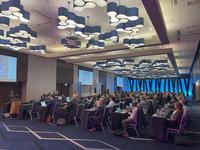
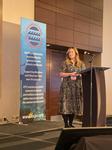
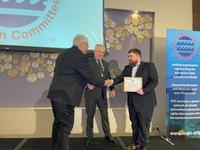
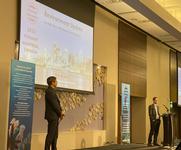
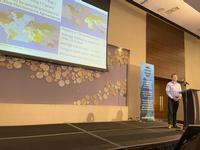


17th April 2025: Plenary Day 3
The final day of the 2025 ICPC Plenary (Thursday) opened with presentations regarding the interactions and relationships with other organisations and seabed users. The following presentations focused on reciprocal outreach and activities within the submarine cable industry.
- Danish Cable Protection Committee (DKCPC); Presented by Per Lundby Andersen
- European Subsea Cable Association (ESCA); Presented by John Wrottesley (ICPC Operations Manager)
- International Hydrographic Organization (IHO); Presented by Graham Evans (ICPC Chairman)
- North American Submarine Cable Association (NASCA); Presented by Gerald Tourgee (DRG Undersea Consulting Inc.)
- ICPC Member organisation, Department for Science, Innovation & Technology (DSIT-UK Government); Presented by Peter Bristow; and
- A presentation from Paul Gabla (SubOptic Association President). ICPC and SubOptic have recently updated an MoU in a continued effort to stay coordinated as leading industry organisations in the submarine cable industry.
- ‘Security Opportunities and Challenges for Submarine Cables in Areas Beyond National Jurisdiction under the BBNJ Agreement’ by Dr Kristine Elfrida Dalaker (Australian National Centre for Ocean Resources)
This presentation explored the interaction between the BBNJ Agreement and discussed the opportunities and challenges that this interaction presents. Particular focuswas given to the provisions for area-based management tools, including marine protected areas and environmental impact assessments under the BBNJ Agreement. Kristine concluded her presentation by considering the opportunities and challenges for further cooperation between stakeholders and the submarine cable industry, giving particular attention to identifying prospects for collaboration during this critical time before the BBNJ Agreement enters into force.
- ‘Eco-Engineered Cable Protection: Case Studies & Results from Hydrodynamic Stability Testing and Ecological Monitoring’ by Maor Bezner (ECOncrete)
This informative presentation showcased studies of eco-engineered cable protection solutions deployed: 1) Eco-engineered Marine Mattresses were deployed at Vineyard Wind 1 to stabilize submarine power cables while supporting marine biodiversity in ecologically sensitive areas, to comply with federal environmental permitting requirements and 2) European TSO Red Eléctrica, where they developed a tailored cable protection solution for a rock trench in an environmentally sensitive area, protecting a high-voltage interconnector and restoring rocky reef habitats and biodiversity.
ECOncrete combines bio-enhancing concrete and nature-inclusive designs, that provide cable protection while creating habitats to support the growth of local marine flora and fauna. Moar shared monitoring protocols and post-deployment biological results. Hydrodynamic stability performance was highlighted through results from physical model testing conducted in collaboration with third parties and universities.
- ‘International Cooperation Against the Backdrop of Increasing Submarine Connectivity’ by Kelly Kong (Singapore Infocom and Media Development Authority)
The presentation’s central message advocated for cooperation over competition in the submarine cable space. Kelly began with outlining the current challenges that the industry faces while highlighting the importance of submarine cables to enhance global connectivity and our digital economies. In the presentation, information was shared about Singapore’s own regulations, (as a global cable connectivity hub), to enhance cable protection and resilience.
Acknowledging the transboundary nature of cables, IMDA called for international cooperation, outlining their current efforts to collaborate with international partners to adopt best practices. The presentation covered their efforts via bilaterally, regionally, and internationally (with partners such as the ICPC and the ITU Advisory Body on Submarine Cables).
- ‘National Grid Ventures Approach to Subsea Cable Infrastructure Resilience’ by Tom Nicholson & James Ombudo (National Grid Ventures)
This presentation provided an overview of an approach to strengthening resilience of subsea cable infrastructure. In the discussion, their Resilience Competency Framework (a tool designed to enhance understanding of resilience across NGV) was conveyed and they outlined the importance of proactive horizon scanning, effective response strategies, and comprehensive recovery planning, ensuring potential incidents and disruptions are prevented.
Lessons learned from past experiences were shared, emphasising the significance of thorough fault location, and stakeholder engagement during incidents. Their preparedness plan was outlined, explaining the establishment of contracts for fault finding and repair services. Tom and James also addressed the importance of collaboration with suppliers for innovation and the need for ongoing dialogue with regulatory bodies to facilitate efficient remedial work.
- ‘Three Strikes in 2024’ by Bruce Rein (General Communication Incorporated)
In this presentation, Bruce discussed the unfortunate cable damages that occurred in 2024. He gave a detailed explanation, providing different sets of circumstances requiring interesting methods to complete repairs.
The first case: Kotzebue/Deering. Located in shallow water depths in the Arctic Circle, ice damage to the cable occurred at the final splice position and the system was not covered by a maintenance agreement. Bruce discussed the options for repair, challenges of its location, findings during repair, and options to avoid damages again.
The second case: AU SE Seg. 5.This cable connecting Sitka to the rest of the world transits with very difficult waterways and Kakul Narrows has been the site of two repairs each eight years apart. The presentation discussed the approaches taken to safely conduct the repair and possible ways to avoid another repair in eight years.
Third case: AU SE Seg. 1.A ships’ anchor was a leading cause of this cable damage. Bruce detailed how the offending ship was identified and the United States Coast Guard requested the vessel standby and not recover its anchor. This case study discussed the interaction with the freighter, reduction of damage area and methods to prevent anchor damages.
- ‘Leveraging Past Experience to Optimize Future Cable Installation on Submarine Cable’ by Sam Lindsay (Ørsted)
This presentation focused on strategies to optimise the design and installation of submarine cables and discussed lessons from past projects to reduce costs and better work in harmony with marine users. Sam demonstrated how data acquired throughout the lifecycle of the windfarm can be leveraged to better understand project risks and therefore reduce unnecessary and unforeseen costs during cable installation. The presentation also focused on practical approaches to define realistic burial requirements considering fishing activity in various ground conditions.
Sam noted that a key benefit for all parties is an increase in certainty of the burial operation and an associated reduction in construction risk, with significant benefit to the project, local authorities, and other marine users.
Before the final day of the Plenary wrapped up, it was announced that the 2026 ICPC Plenary will take place in Athens, Greece! We hope to see you there!
Many thanks to all of the Member organisations, speakers, observers and invited guests who participated in the event—we cannot do it without your support and involvement!
Please reach out to [email protected] for any questions!
